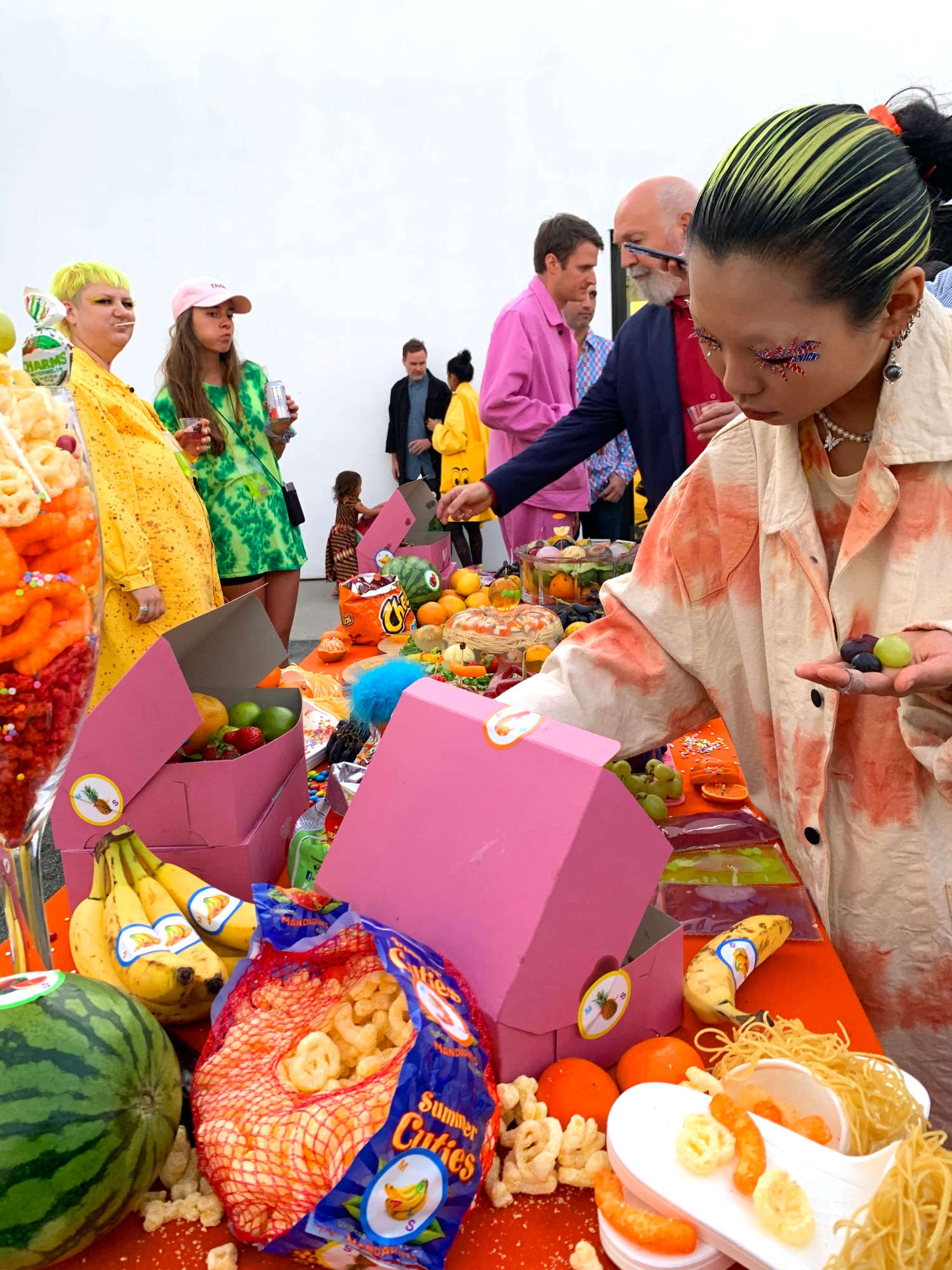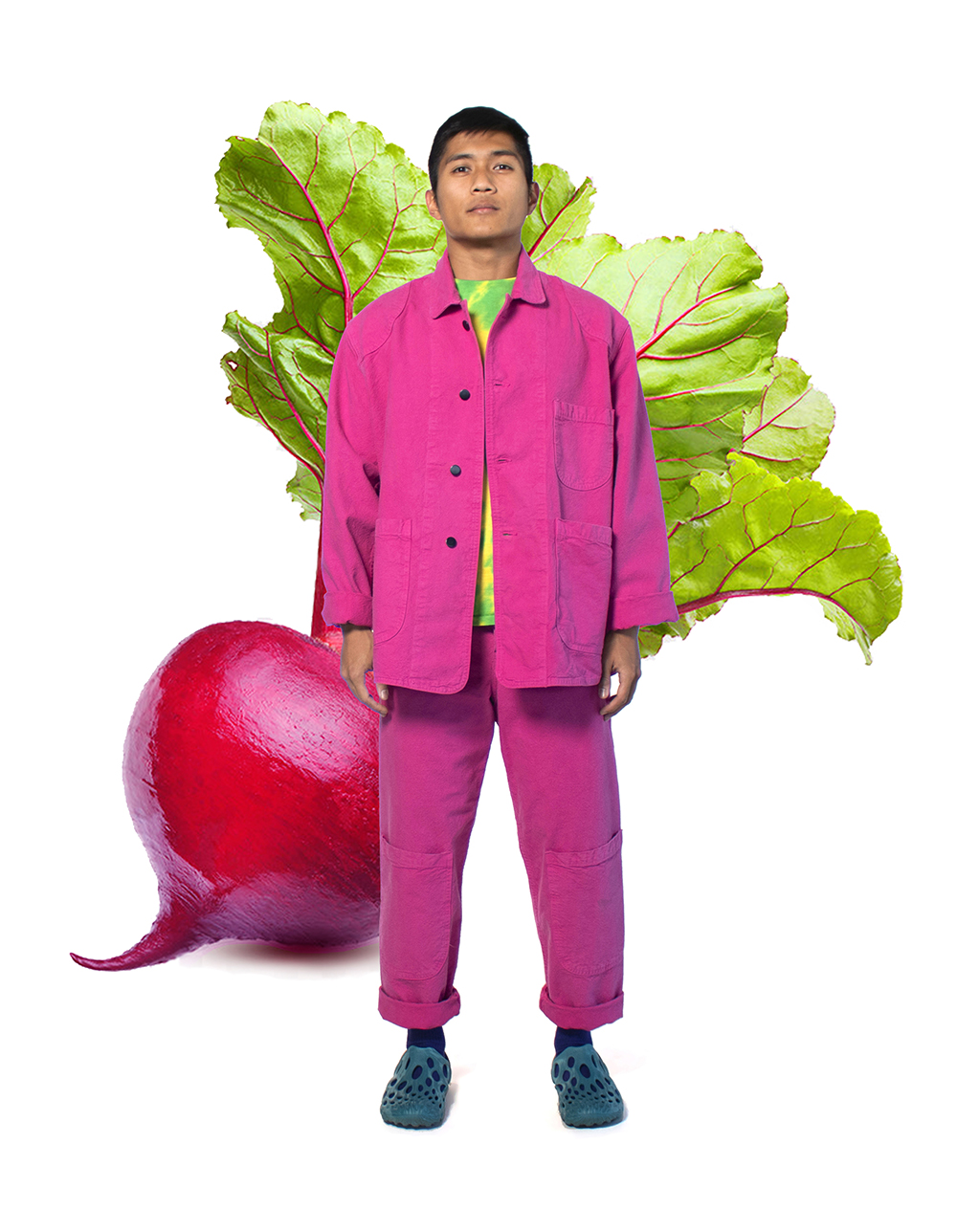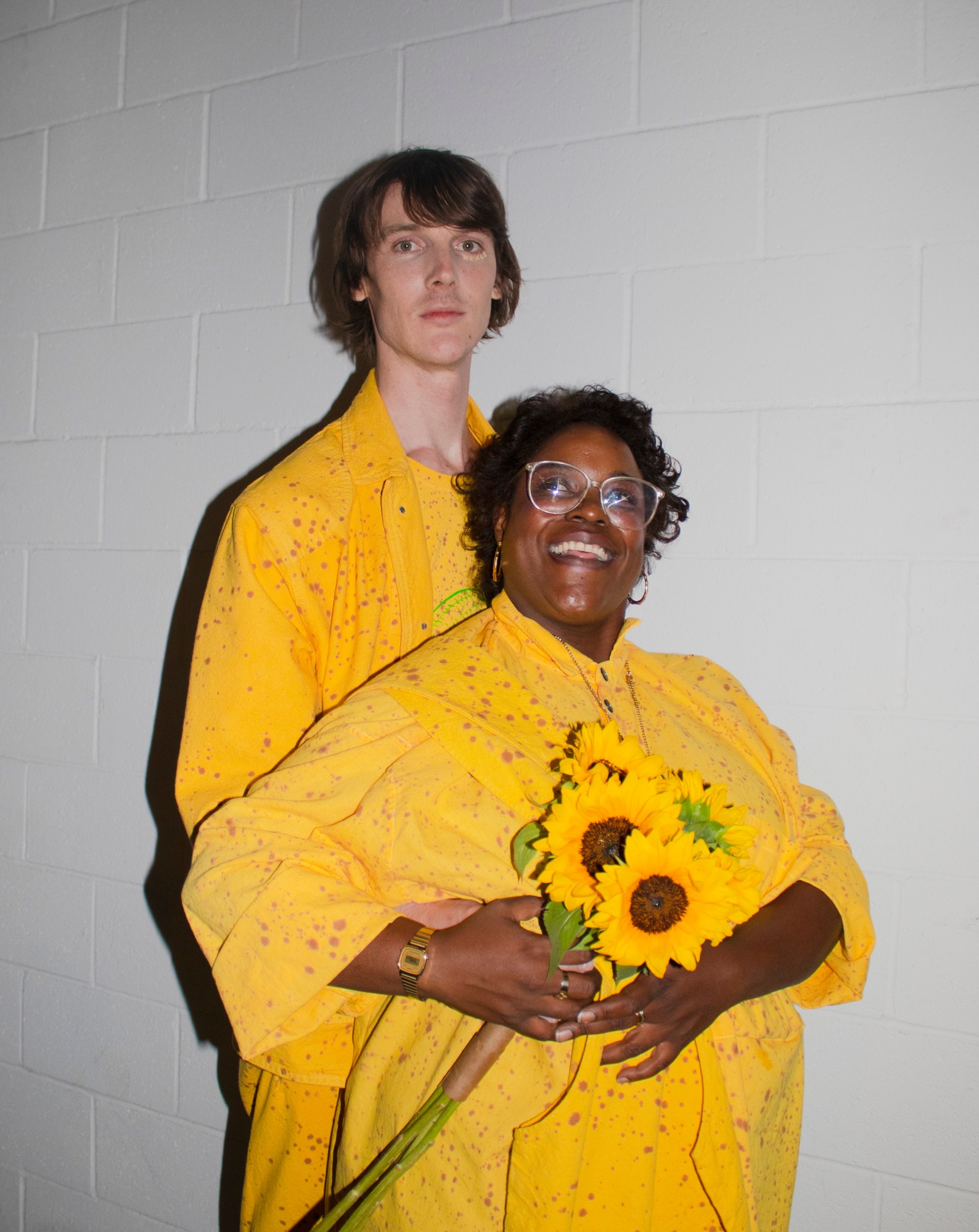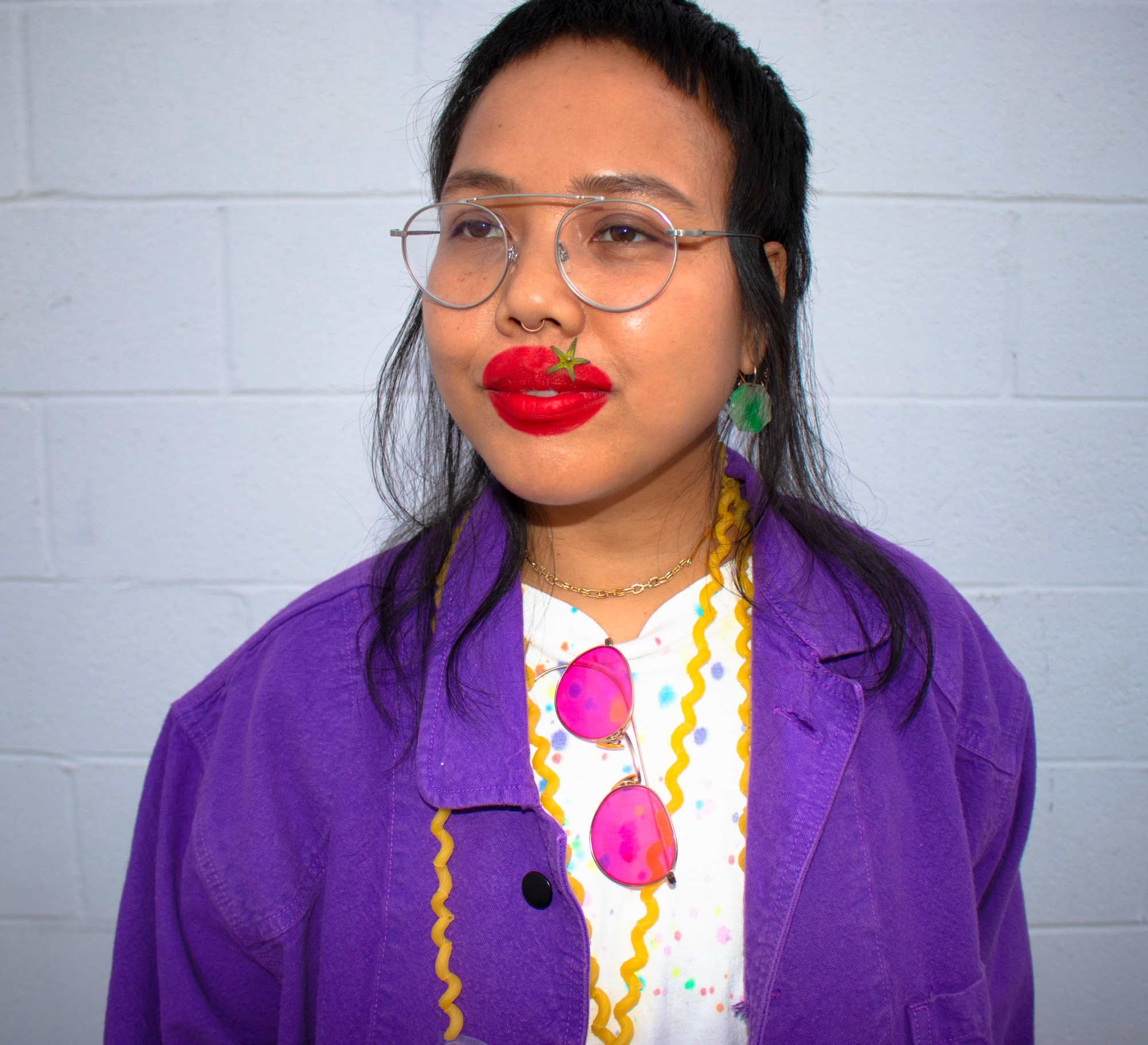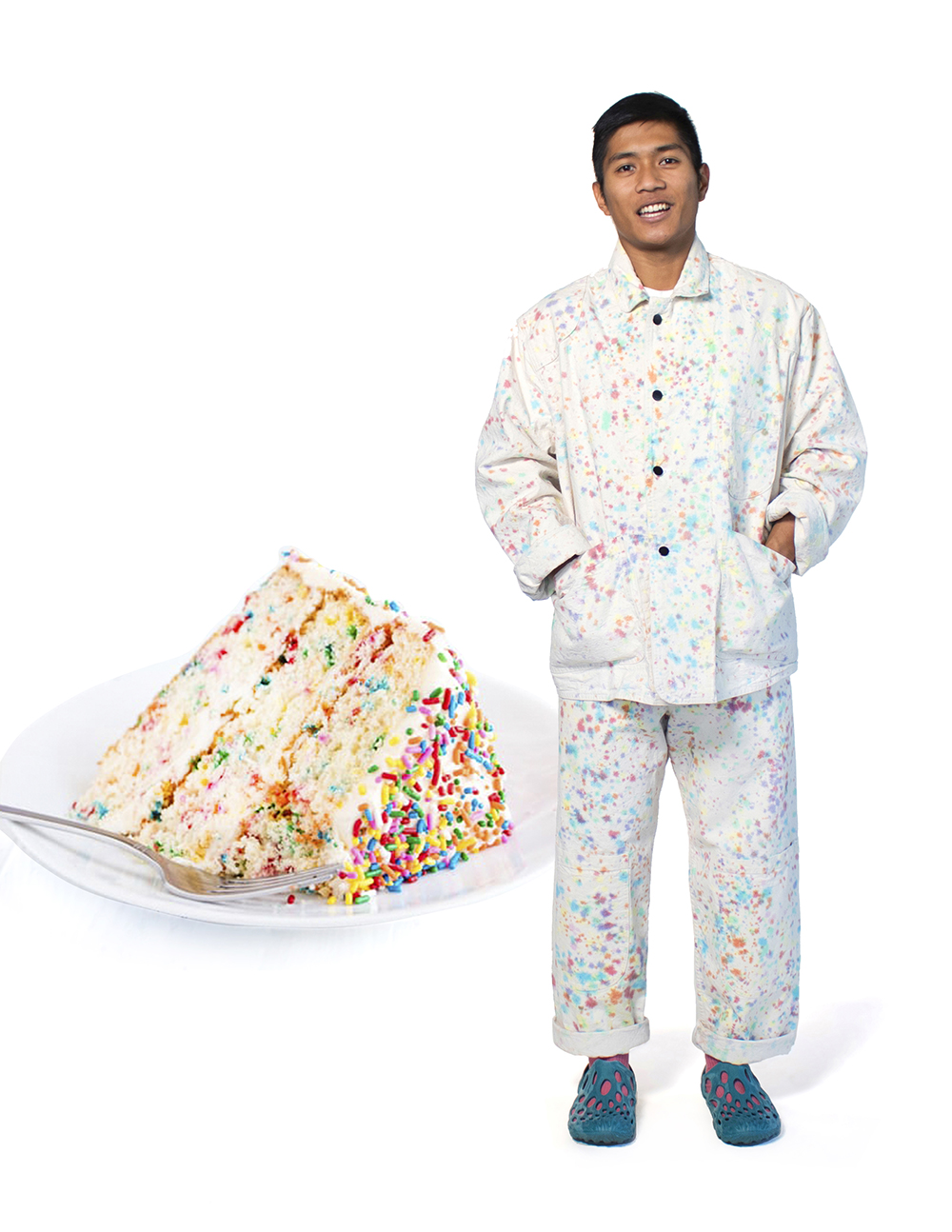Rebma and Sam Salad, designers and couple behind the LA-based brand Meals, say that food and clothing production are similar. “To make pants, cotton is grown, milled, cut, sewn, and dyed. To make salad, romaine is grown, chopped, washed, and drizzled in olive oil,” Sam explains (they both go under a pseudonym to separate their various lines of work). Meals looks to bake food culture into apparel, blurring the lines between the clothes we eat and the food we wear.
Meals’ slogan is “Wear What You Eat” and their first collection brings this to life through a combination of workwear shapes (using dead stock or vintage materials) and colorful patterns from watermelons, shrimps, bananas, and grape soda. The designs are gender neutral because “everybody eats and everybody wears clothes” and the large pockets double as storage when shopping at the market. “I always forget to bring bags to the grocery store,” Rebma explains.
Rebma helms the visual side of the brand and Sam handles the voice and tone, with a background in garment production. They both decided to use pseudonyms “because they’re fun” but also to create more of a boundary with their other work. i-D spoke to the food enthusiasts about coming up with a brand idea while high, how to confuse food and fashion, and what they like to eat.
Tell me a bit about both of your backgrounds.
Sam:I grew up in a household where food was everything. My mom’s an exceptional baker, and was always painting still lifes of fruit. Rebma has a long, rich relationship with fantasy, of building worlds, and they’ve held onto that since they were little.
Have you always been creative?
S: Rebma is the formerly anonymous creative force behind the cult denim brand 69. I’m a writer with a background in apparel production. Rebma’s education really came from working in a magazine archive, and everything I know comes from the Simpsons.
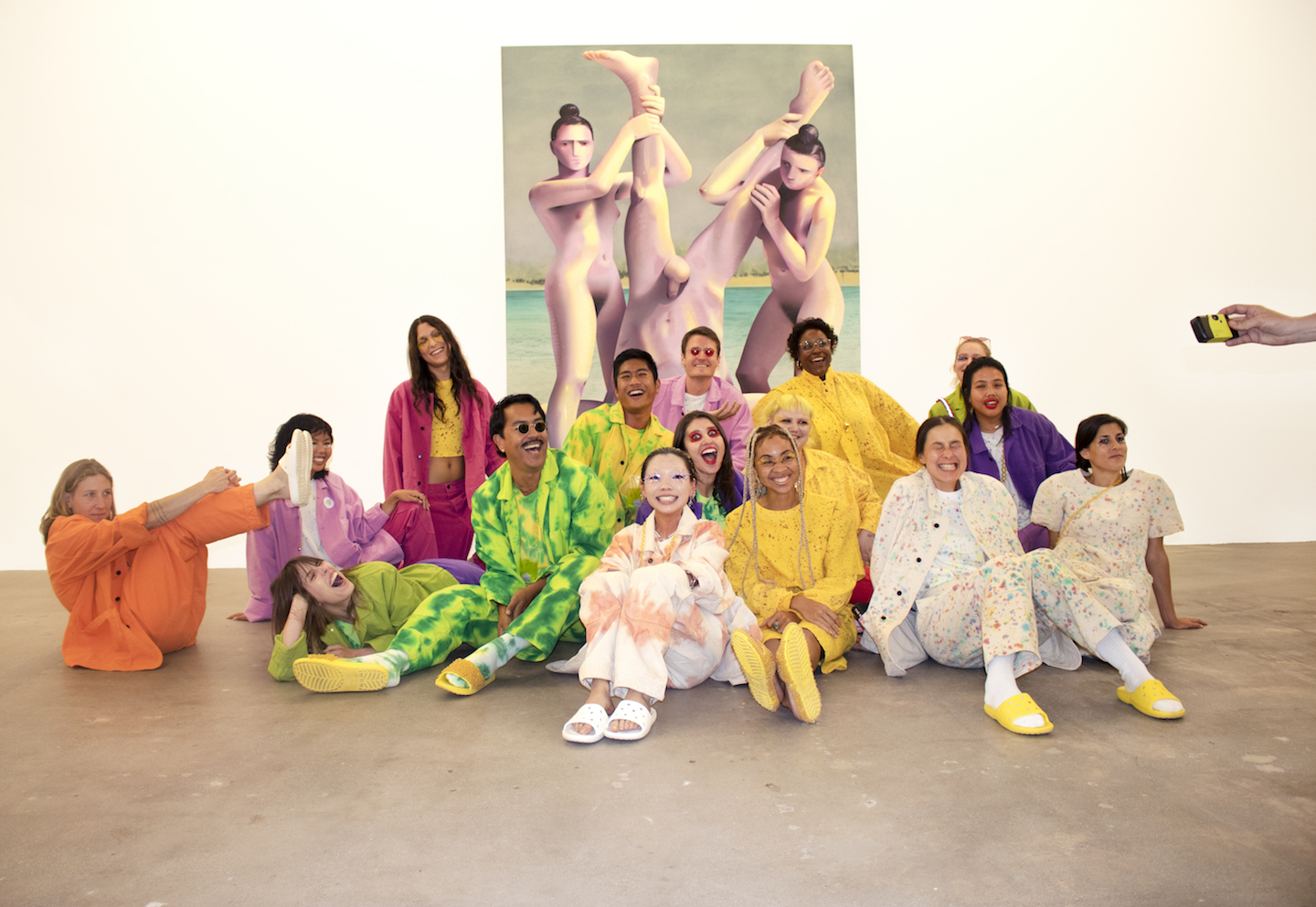
How did you meet and decide to create a brand together?
S: I went to a 69 sample sale and flirted with Remba. I bought a very sheer skirt and returned it so I could flirt more. Then we went to Disneyland for our first date. The idea for Meals came when I picked Remba up from the airport; we recently started smoking pot, and got the ‘high-dea’ for Meals on our way to dinner.
Why food?
S: 2019 prizes experiences over objects. We’re living in an age of pop-ups, activations, and selfie-centric museums. Food is an experience too. Meals infuses the experience of food into fashion, and vice versa—through language, imagery, and merchandising, we’re trying to completely confuse the two.
What do you think appeals to people about combining food and clothing?
Rebma: It’s a weird concept, but it’s very literal. For us, it was about combining two things (food and clothes) that bring us joy, and that really resonates with people.

Why did you choose to use deadstock or vintage materials?
R: A lot of the fabric we use is slightly defective. Just because an apple has a bruise doesn’t mean you throw it out. As for dead-stock fabric, there’s a wonderful scarcity to it. Once it’s gone, you’ll probably never see it again.
Are you both foodies? What are your favorite meals?
S: Rebma likes the plant-based burger at Monty’s in K-town. We go there when we’re celebrating. We’ll probably go get one when this piece comes out. I’m currently obsessed with Korean fish cake soup, and there’s a good version at this sports bar near us called OB Bear.
What are your plans for the future of the brand?
R: We want to keep developing insane washes and meeting chefs and eating cool food. We’re hosting a Thanksgiving dinner at our studio with our friend, the food artist, Nunchi. She’s figuring out how to put an entire Thanksgiving dinner in a go-gurt tube.
